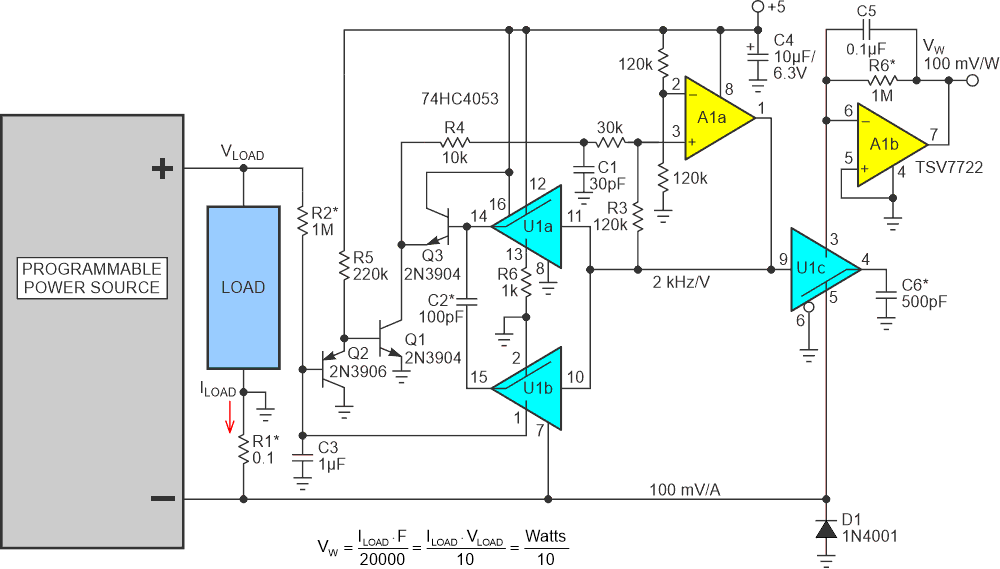Analog topologies abound for converting current to voltage, voltage to current, voltage to frequency, and frequency to voltage, among other conversions.
Figure 1 joins the flock while singing a somewhat different tune. This current, voltage, and power (IVW) DC power converter multiplies current by voltage to sense wattage. Here’s how it gets off the ground.
The basic topology of the IVW converter comprises a voltage-to-frequency converter (VFC) cascaded with a frequency-to-voltage converter (FVC). U1ab and A1a, combined with the surrounding discretes (Q1, Q2, Q3, etc.), make a VFC similar to the one described in this previous Design Idea, “Voltage inverter design idea transmogrifies into a 1 MHz VFC” (Ref. 1).
The U1ab, A1a, C2, etc., VFC forms an inverting charge pump feedback loop that actively balances the 1 µA/V current through R2. Each cycle of the VFC deposits a charge of 5 V × C2, or 500 picocoulombs (pC), onto integrator capacitor C3 to produce an F of 2 kHz × VLOAD (= 1 µA / 500 pC) for the control signal input of the FVC switch U1c.
The other input to the U1c FVC is the -100 mV/A current-sense signal from R1. This combo forces U1c to pump

into the input of the A1b inverting integrator.
The melodious result is:

or,

The R6C5 = 100-ms integrator time constant provides >60-dB of ripple attenuation for VLOAD > 1-V and a low noise 0- to 5-V output suitable for consumption by a typical 8- to 10-bit resolution ADC input. Diode D1 provides fire insurance for U1 in case VLOAD gets shorted to ground.
Reference
- Woodward, Stephen. "Voltage inverter design idea transmogrifies into a 1MHz VFC."
